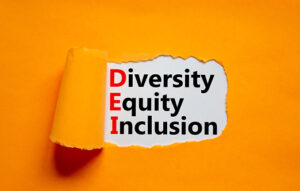Executive Summary
In today’s interconnected global economy, cultural competence is a critical skill for success in international business. Understanding cultural differences from communication styles to decision-making processes enables individuals to build trust, avoid misunderstandings, and foster sustainable partnerships across borders. For students in Homabay County, developing intercultural awareness not only enhances their employability but also positions them to contribute meaningfully to Kenya’s expanding trade relations, particularly within the COMESA region.
Introduction
Culture plays a foundational role in shaping how individuals communicate, negotiate, and conduct business. In international settings, these cultural nuances can significantly impact outcomes from contract negotiations to team collaborations. As Kenya strengthens its regional and global trade ties, the need for culturally competent professionals becomes increasingly urgent.
Homabay County, though geographically remote, is not immune to the forces of globalization. Local youth are increasingly participating in national and international programs that expose them to diverse cultures and global opportunities. Educational institutions in the county have a unique opportunity and responsibility to integrate cultural studies into their curricula, ensuring students are prepared for a world where intercultural communication is essential.
Understanding Cultural Differences in International Business
1. Defining Cultural Differences
Cultural differences in business refer to variations in values, norms, communication styles, and decision-making practices across societies. These differences influence:
Communication Styles: Some cultures value directness (e.g., Germany), while others prefer indirect communication to preserve harmony (e.g., Japan).
Time Orientation: Punctuality is highly valued in some cultures (e.g., Switzerland), whereas others may adopt a more flexible view of time.
Hierarchy and Authority: Organizational structures vary, with some cultures emphasizing formal hierarchies (e.g., India) and others promoting egalitarianism (e.g., Sweden).
Negotiation Approaches: Cultures differ in whether they prioritize building relationships before contracts or focus primarily on legal agreements.
2. Hofstede’s Cultural Dimensions
Geert Hofstede’s model provides a useful framework for analyzing cultural differences through dimensions such as:
Individualism vs. Collectivism
Power Distance
Uncertainty Avoidance
Long-Term Orientation
These dimensions help explain why people from different countries approach business decisions differently and guide strategies for effective cross-cultural engagement.
The Role of Education in Building Cultural Awareness
1. Preparing Students for the Global Job Market: Integrating intercultural awareness into the curriculum helps students develop soft skills such as empathy, adaptability, and effective communication traits highly valued in international careers. Whether pursuing roles in diplomacy, international trade, or non-governmental organizations, students who understand cultural diversity are better positioned to succeed.
For example, Lennox Omondi, a Homabay native, won the Hult Prize an international competition for social entrepreneurs with his venture Ecobana. His ability to engage with global audiences reflects the potential of Homabay youth when equipped with cross-cultural competencies.
2. Promoting Tolerance and Diversity in Classrooms: Teaching students about different cultures fosters inclusivity and respect within schools. This not only enriches the learning environment but also prepares students to thrive in multicultural workplaces and communities.Schools like Agoro Sare High School can incorporate case studies, guest lectures, and collaborative projects with international partners to broaden students’ perspectives.
3. Encouraging Careers in Diplomacy, Trade, and NGOs: Exposure to intercultural education can inspire students to pursue careers requiring global engagement. By offering subjects related to international relations, foreign languages, and global economics, schools can nurture future leaders in fields such as trade, diplomacy, and humanitarian work.
How Cultural Understanding Benefits International Business
1. Reducing Miscommunication and Building Trust: Misunderstandings due to cultural differences can lead to failed negotiations or damaged relationships. A businessperson from Homabay seeking to partner with investors in China or Europe must understand nuances such as hierarchy, formality, and negotiation style to build trust and credibility.
2. Enhancing Negotiation, Teamwork, and Market Adaptation: Cultural insight improves effectiveness in key business areas:
- Negotiation: Relationship-building is often crucial in African and Asian cultures, while Western cultures may prioritize efficiency and clarity.
- Team Management: Leaders must understand expectations around authority, feedback, and collaboration in multicultural teams.
- Marketing: Adapting products or services to local preferences increases market penetration. For instance, an agribusiness in Homabay exporting to Rwanda would benefit from tailoring branding to align with local tastes and values.
3. Promoting Ethical Business Practices and Regional Sustainability: Culturally aware businesses are more likely to operate ethically and sustainably. They respect local customs, laws, and community values, which is especially important for NGOs and CBOs working in Homabay on youth development and entrepreneurship initiatives.
Strategies for Integrating Cultural Learning in Homabay Schools
1. Curriculum Integration: Business and language subjects should include modules on intercultural communication, global etiquette, and comparative cultural studies. This aligns with Kenya’s Competency-Based Curriculum (CBC), which emphasizes practical learning and global awareness.
2. Exchange Programs and Cultural Immersion Initiatives: Partnerships between Homabay schools and international institutions can provide students with firsthand exposure to different cultures. Example, the British Council’s Connecting Classrooms program links Kenyan schools with counterparts in the UK, enhancing cross-cultural understanding.
3. Leveraging Virtual Platforms: Digital tools such as video conferencing, online collaboration platforms, and virtual internships can offer students access to global perspectives without physical travel. The Digital Literacy Program (DLP) in Homabay provides a foundation for integrating such technologies into classroom learning.
Role of Stakeholders in Advancing Intercultural Education
1. Schools and TVET Institutions: Educational institutions must embed global perspectives into teaching materials. The County Department of Education can support this by training teachers and providing resources for intercultural instruction.
2. Non-Governmental Organizations (NGOs): Organizations like the Mango Tree Orphan Support Trust and the Lake Basin Development Authority can facilitate cultural exchange programs, mentorship, and digital learning opportunities.
3. County Government: The government should support policies that promote cultural education. The County Integrated Development Plan (CIDP) 2023–2027 includes plans for a multiplex cultural center at Ndiru Kagan, which could serve as a hub for intercultural learning and events like the Rusinga Cultural Festival.
4. Parents and Community: Parents and local leaders play a vital role in encouraging openness to new ideas. Community based discussions, cultural events, and storytelling sessions can expose learners to diverse perspectives and foster inclusivity.
Case Insight: International Exposure and Diaspora Engagement
Lennox Omondi’s success with Ecobana illustrates the potential of Homabay youth on the global stage. His story underscores the importance of integrating social entrepreneurship and global awareness into education. With support from mentors and international networks, many more young people from Homabay can follow similar paths.
Call to Action
To strengthen cultural competence among students in Homabay County, the following actions are recommended:
- Expand Curricula to Include Global Cultural Elements: Integrate intercultural studies into business, language, and social studies subjects.
- Foster International Partnerships: Establish collaborations with schools and organizations abroad to facilitate exchange programs and virtual learning.
- Promote Soft Skills Development: Implement programs focused on adaptability, empathy, and global thinking to prepare students for modern workplaces.
- Support Infrastructure and Teacher Training: Invest in ICT infrastructure and professional development for educators to ensure effective delivery of intercultural content.
Conclusion
As Homabay County looks toward a future of increased global connectivity, cultural competence will be a cornerstone of educational and economic success. By embedding intercultural learning into school systems, supporting teacher training, and fostering international partnerships, the county can empower its youth to navigate the complexities of international business with confidence and integrity.
References
- Hofstede, G. (2010). Cultures and Organizations: Software of the Mind. McGraw-Hill.
- Ministry of Education, Kenya. (2022). Competency-Based Curriculum Framework.
- British Council. (2023). Connecting Classrooms Program Impact Report.
- Hult Prize Foundation. (2022). Annual Impact Report.
- County Government of Homabay. (2023). County Integrated Development Plan (CIDP) 2023–2027.
- Ministry of Education, Kenya. (2021). Digital Literacy Program Implementation Review.
- Mango Tree Orphan Support Trust. (2023). Annual Report on Educational Outreach Programs.




